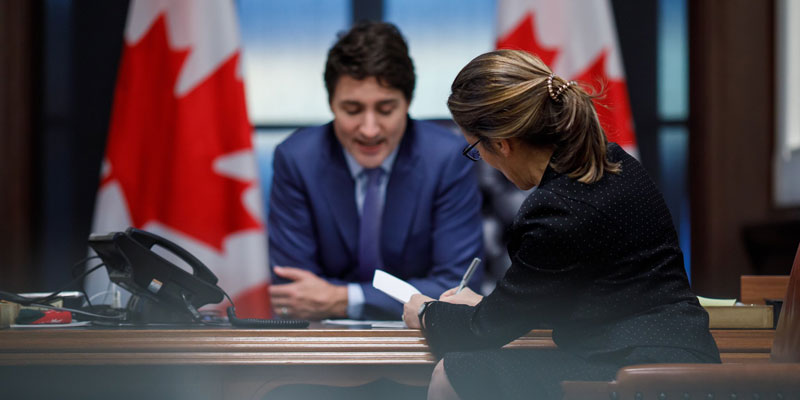Trudeau government should heed warnings from other ‘green’ economic plans

Today in Ottawa, the Trudeau government will deliver a much-anticipated throne speech, which may include big “green” spending initiatives as part of an economic recovery plan in light of COVID and the recession.
Indeed, earlier this month, federal Finance Minister Chrystia Freeland said “the restart of our economy needs to be green.” Prime Minister Trudeau has sent the same message, stating that Canada must seize the opportunity created by the pandemic to become a “greener” country. Given these statements and other signals, it should surprise no one if the throne speech includes massive subsidies for renewable energy sources (wind, solar, etc.).
Of course, while emissions-reduction is a desirable goal, there are several problems with artificially expanding renewable energy power. Because the wind doesn’t always blow and the sun doesn’t always shine—and the energy from these sources cannot be stored at adequate levels—wind and solar remain unreliable sources of energy. Subsequently, these sources require back-up power such as natural gas. As a result, the extra costs associated with keeping gas-powered plants idling increases electricity prices for consumers and generates additional greenhouse gas emissions.
We’ve already seen what happens when governments subsidize wind and solar energy. In Ontario, as a result of that province’s Green Energy Act, which subsidizes renewable electricity, residential electricity prices rose a staggering 71 per cent between 2008 and 2016. The province’s industrial sector also suffered from significant price hikes, which is one of the key costs for manufacturers. In fact, the increase in electricity prices cost Ontario an estimated 74,000 manufacturing jobs between 2008 and 2015. And despite the massive subsidies paid to renewable generators, wind and solar account for only about 8 per cent of Ontario’s electricity output.
Past experiences from other countries also suggest similar results. Consider Germany’s push towards renewable energy. According to reports, Germany’s Energiewende, the country’s ambitious plan to shift from nuclear power to renewables, is destined to fail. After spending 160 billion euros over the last five years, Germany has failed to materially change the mix of its electricity grid with conventional sources still providing two-thirds of the output while emissions have remained relatively stable when the goal was to reduce them.
Finally, according to International Energy Agency data, renewables remain a minor component of the global energy mix. In 1990, the share of solar and wind in total energy supply was 0.4 per cent. By 2018, it stood at only 2 per cent. And these renewable sources account for only 7 per cent of the world’s total electricity production.
Overall, despite more than two decades of massive subsidies and tax breaks, wind and solar still represent barely more than a rounding error of global energy production.
The evidence is clear—governments around the world have failed to “green” their economies by subsidizing renewable energy. These experiences should serve as a cautionary tale for the Trudeau government as it forms an economic recovery plan from the COVID recession.


